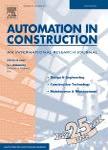版权所有:内蒙古大学图书馆 技术提供:维普资讯• 智图
内蒙古自治区呼和浩特市赛罕区大学西街235号 邮编: 010021

作者机构:Incheon Natl Univ Div Architecture & Urban Design Incheon 22012 South Korea Yonsei Univ Dept Architecture & Architectural Engn Seoul 03722 South Korea
出 版 物:《AUTOMATION IN CONSTRUCTION》 (建造自动化)
年 卷 期:2023年第156卷
核心收录:
学科分类:08[工学] 0813[工学-建筑学] 0814[工学-土木工程]
基 金:Incheon National University [2020-0383]
主 题:VR-based construction safety training Learning performance Forecast model Biometric response Machine learning algorithm Construction worker
摘 要:During virtual reality-based safety training, it is necessary to immediately and objectively evaluate personal learning performance. In light of this, this study proposed an interpretable machine learning approach for forecasting personal learning performance in VR-based construction safety training using real-time biometric responses. During VR-based safety training ( fall accidents on scaffolding ), eye-tracking and EEG data were collected in real time from 30 participants (i.e., construction workers). The main findings can be summarized as follows. Compared to the full forecast model (FM), the support vector regression algorithm of the simplified forecast model (SM), which considers only principal features as independent variables, demonstrated better prediction performance (i.e., accuracy improvement: 0.087 of mean absolute error, overfitting: one-third level of the FM). This study creates new ground in the field of personalized safety training by enabling real-time monitoring and diagnosis for the cognitive states (i.e., learning performance) of construction workers during VR-based construction safety training.